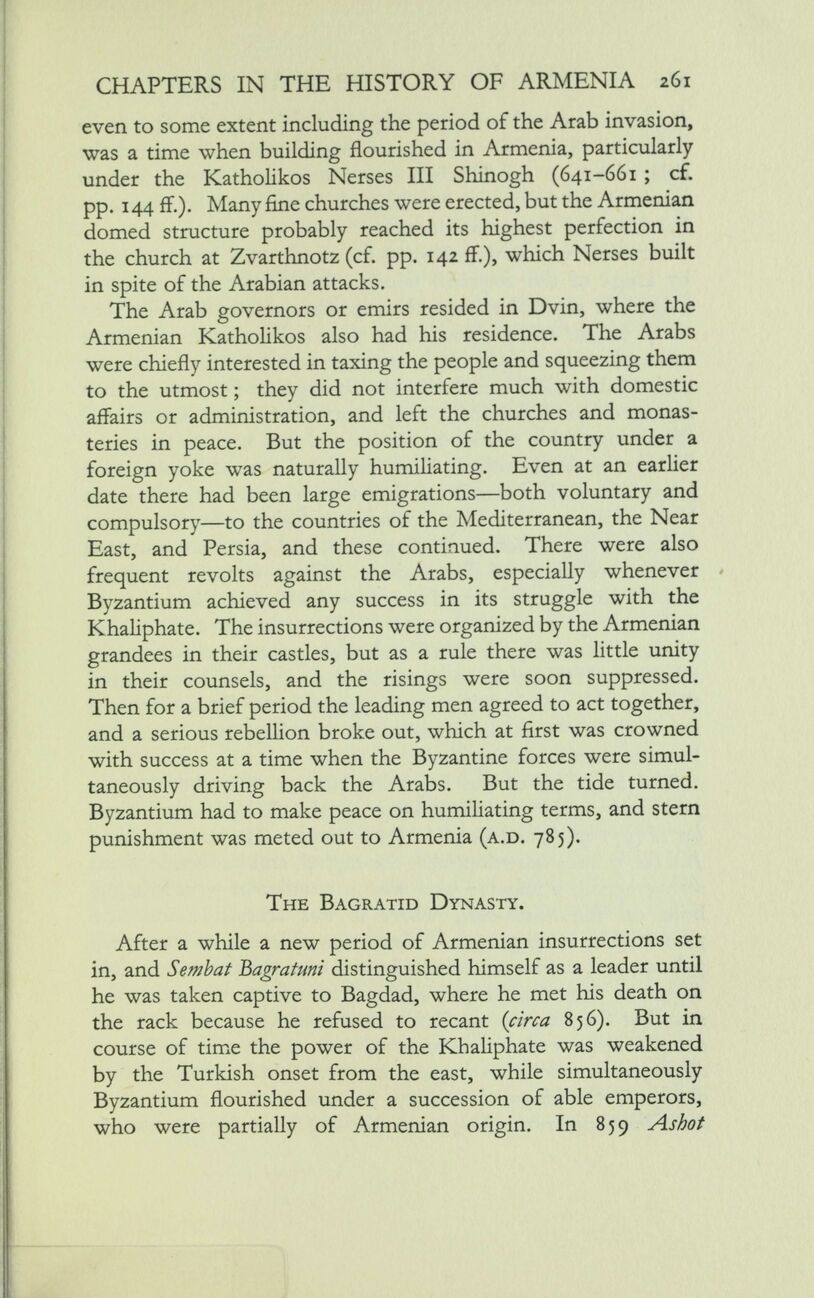
Full resolution (JPEG) - On this page / på denna sida - X. Chapters in the history of Armenia

<< prev. page << föreg. sida << >> nästa sida >> next page >>
Below is the raw OCR text
from the above scanned image.
Do you see an error? Proofread the page now!
Här nedan syns maskintolkade texten från faksimilbilden ovan.
Ser du något fel? Korrekturläs sidan nu!
This page has never been proofread. / Denna sida har aldrig korrekturlästs.
CHAPTERS IN THE HISTORY OF ARMENIA 261
Even to some extent including the period of the Arab invasion,
was a time when building flourished in Armenia, particularly
under the Katholikos Nerses 111 Shinogh (641-661 ; cf.
pp. 144 ff.). Many fine churches were erected, but the Armenian
domed structure probably reached its highest perfection in
the church at Zvarthnotz (cf. pp. 142 ff.), which Nerses built
in spite of the Arabian attacks.
The Arab governors or emirs resided in Dvin, where the
Armenian Katholikos also had his residence. The Arabs
were chiefly interested in taxing the people and squeezing them
to the utmost ; they did not interfere much with domestic
affairs or administration, and left the churches and monas
teries in peace. But the position of the country under a
foreign yoke was naturally humiliating. Even at an earlier
date there had been large emigrations—both voluntary and
compulsory—to the countries of the Mediterranean, the Near
East, and Persia, and these continued. There were also
frequent revolts against the Arabs, especially whenever
Byzantium achieved any success in its struggle with the
Khaliphate. The insurrections were organized by the Armenian
grandees in their castles, but as a rule there was little unity
in their counsels, and the risings were soon suppressed.
Then for a brief period the leading men agreed to act together,
and a serious rebellion broke out, which at first was crowned
with success at a time when the Byzantine forces were simul
taneously driving back the Arabs. But the tide turned.
Byzantium had to make peace on humiliating terms, and stem
punishment was meted out to Armenia (a.d. 785).
The Bagratid Dynasty.
After a while a new period of Armenian insurrections set
in, and Sembat Bagratuni distinguished himself as a leader until
he was tåken captive to Bagdad, where he met his death on
the rack because he refused to recant (circa 856). But in
course of time the power of the Khaliphate was weakened
by the Turkish onset from the east, while simultaneously
Byzantium flourished under a succession of able emperors,
who were partially of Armenian origin. In 859 Ashot
<< prev. page << föreg. sida << >> nästa sida >> next page >>